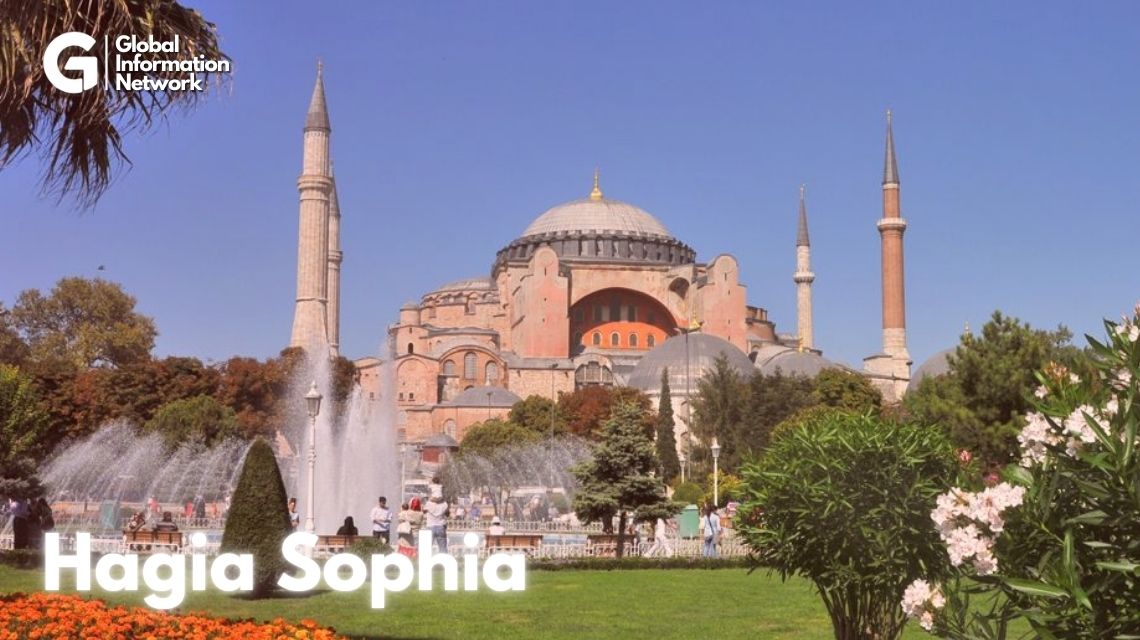The Hagia Sophia, located in Istanbul, Turkey, is one of the world’s most significant architectural masterpieces. Originally built as a cathedral in the Byzantine Empire, it has since been a mosque, a museum, and is currently a mosque again. This iconic structure represents a blend of Christian and Islamic influences, symbolizing the rich cultural history of Istanbul.
The History of Hagia Sophia: From Church to Mosque
The Byzantine Era (537 - 1453)
Commissioned by Emperor Justinian I, the Hagia Sophia was completed in 537 AD and served as an Eastern Orthodox cathedral for nearly a thousand years. It was renowned for its massive dome, which was an engineering marvel at the time and influenced the design of many other structures.
{inAds}
The Ottoman Period (1453 - 1935)
Following the conquest of Constantinople in 1453, Sultan Mehmed II converted Hagia Sophia into a mosque. Islamic features, such as minarets and calligraphic inscriptions, were added alongside the existing Christian mosaics, creating a unique architectural fusion.
Architectural Significance of Hagia Sophia
The Dome and Its Influence
The central dome, spanning over 31 meters, is considered a significant achievement in Byzantine architecture. It appears to float above the central nave due to a ring of windows at its base, creating an ethereal effect. This design influenced both Eastern Orthodox and Islamic architectural styles.
Mosaics and Calligraphy
Inside Hagia Sophia, visitors can find intricate mosaics depicting Christian figures, such as the Virgin Mary and Jesus Christ, alongside large medallions bearing Arabic calligraphy. This blend of artistic styles showcases the building’s historical transformation over centuries.
{inAds}
The Transformation into a Museum (1935 - 2020)
In 1935, Hagia Sophia was secularized and converted into a museum by the Republic of Turkey’s founder, Mustafa Kemal Atatürk. This decision aimed to preserve the building as a historical monument, accessible to people of all faiths and backgrounds. The mosaics were uncovered and restored, allowing visitors to appreciate the blend of Christian and Islamic artistry.
Hagia Sophia Today: A Return to Its Religious Roots
In 2020, Hagia Sophia was re-designated as a mosque. While it remains open to visitors, some sections, particularly those with Christian mosaics, are covered during prayer times. The decision to revert it to a mosque was met with international discussion but has also reaffirmed its status as an active place of worship and a symbol of Istanbul’s diverse history.
{inAds}
Visiting Hagia Sophia: What to Expect
Touring the Interior
Visitors can admire the magnificent dome, historical mosaics, and Islamic calligraphy. Guided tours often provide insights into its architectural and cultural significance.
Practical Information for Visitors
The Hagia Sophia is located in the Sultanahmet district, easily accessible by public transport. Modest dress is required for entry, especially during prayer times.
Conclusion: Why Hagia Sophia Remains a Must-See
Hagia Sophia is more than just an architectural marvel; it’s a living testament to Istanbul’s history. Its transition from church to mosque, museum, and back to mosque reflects the city’s cultural and religious evolution. For those interested in history, architecture, or spirituality, a visit to Hagia Sophia offers a unique glimpse into the past and present of this iconic landmark.

